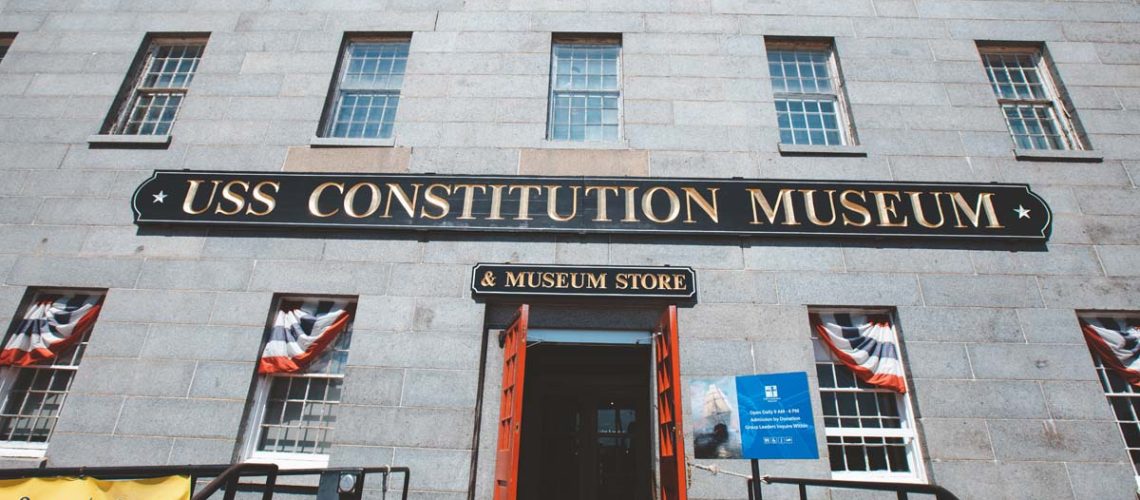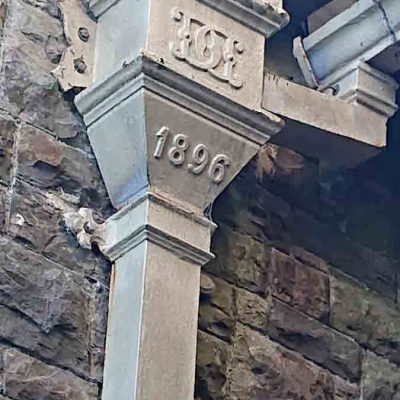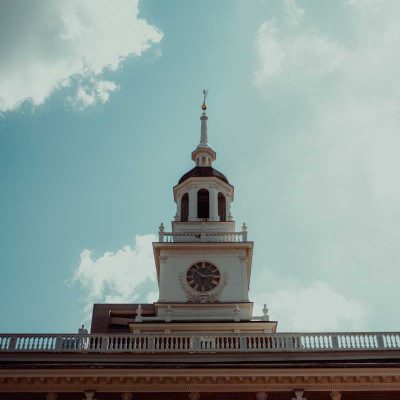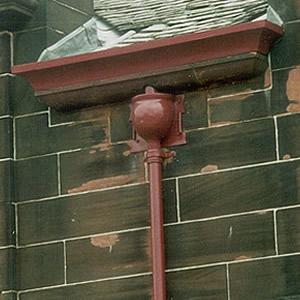


What do the NYC Public Library, the White House, and the Philadelphia Museum of Art have in common? You guessed it; they are all iconic American landmarks. As American citizens, we take pride in preserving and cherishing these symbols of our culture. Part of what makes them so unique is their unique roofs. Hidden beneath their steeply sloped shingles are cast iron leader heads.
Leader heads are architectural roof drainage systems popularized in the Victorian era (1837-1901). These fixtures were used for ornamentation to practicality, with most homes and buildings constructed with them during this period. Millions of these beautiful pieces remain in historic U.S. buildings, making them an essential part of America’s architectural heritage. In this article, we’ll explore why cast iron leader heads were used for historic U.S. buildings and what you should consider if you want to preserve or replace them.
Leader heads are decorative elements usually made of cast iron used in historic buildings. They have a long and storied history in the United States, with many iconic buildings displaying these unique and intricate roof ornaments. Leader heads are typically located where roof drainage systems connect to gutters and other drainage devices. But their primary purpose is to create an attractive look for a building’s exterior while drawing water away from the structure.
When you think of leader heads, what likely comes to mind are ornate designs with various motifs, from simple patterns to animals and other figures, all crafted into the iron structure. Depending on the age of a building, you may see them as plain-looking or adorned with elaborate carvings and flourishes. No matter the design, however, leader heads add a layer of charm to old buildings, giving them an unmistakable presence on any street corner or skyline.

You may have seen them on historic buildings throughout the U.S., but do you know the story behind cast iron leader heads? These ornamental structures were designed to collect and divert rainwater away from buildings and were often used to adorn the rooflines of distinguished structures.
The use of cast iron leader heads in the U.S. dates back to the late 18th century when they were first employed in Philadelphia. As building techniques improved, their use spread across the country, with applications in numerous iconic structures such as The White House in Washington, DC and many 19th-century churches and other public buildings.

Conservationists also favour cast iron leader heads for their durability and ease of maintenance.
They are known for lasting more than a hundred years due to the hardiness of their material; furthermore, because they can be removed without damaging surrounding materials, maintenance costs for these structures tend to be very low compared to other building ornamentation options.
Thanks to these qualities and their lovely esthetic, it is easy to see why cast iron leader heads remain popular for conserving historic U.S. buildings today.
There are a few options for keeping the integrity of historic U.S. buildings intact, but the most popular is cast iron leader heads. And for a good reason too.
Cast iron leader heads are one of the best investments you can make when it comes to preserving the beauty and structural soundness of your home or building. Because they’re made from non-corrosive cast iron, these leader heads can withstand harsh weather conditions, strong winds, and constant wear and tear.
Installation is also easy; you only need to measure your roof accurately, choose an appropriately sized leader head, and install it with a suitable fastener. No muss, no fuss!
But one of the most outstanding features of cast iron leader heads is their authentic look and feel that brings out a historic building’s original charm. Whether you’re a homeowner looking to add a touch of elegance or a business owner wanting to stand out from other nearby buildings, cast iron leader heads are always a safe bet.
Have you ever wondered why cast iron leader heads are crucial for preservation and restoration projects? Well, there are some great reasons.
Firstly, cast iron is solid and durable; it can withstand the wear and tear of time in a way that other materials cannot. Correct installation can last decades, protecting everything from the buildings and facades to the underlying structure.
Cast iron is also historically authentic, meaning you don’t need to worry about your building losing its original character or charm. The addition of cast iron leader heads ensures that the building looks as close to its original form as possible, ideal for projects such as restoring historic buildings.
Furthermore, cast iron products can be quickly and easily installed onto roofs using standard adhesives or mechanical fasteners, perfect when you need to meet stringent time constraints. This installation form also minimizes disruption, meaning minimal disruption to daily life while restoration occurs.
Cast iron leader heads are worth considering if you’re looking for an efficient way to preserve and restore a building without compromising its overall look or character.
There are several different types when casting iron gutters for historic U.S. buildings. The main types include:
Leader heads, or conductor’s heads, are the most commonly used guttering for U.S. buildings. These decorative pieces connect the roof’s drainpipes with the central gutter system. Leader heads are made from durable cast iron and come in various designs, allowing you to choose one that best matches the architecture of your building.

Downspouts and outlets are essential to a drainage system as they allow water to flow correctly away from your building’s foundation. They come in several sizes, depending on the size and scope of your project.
Pipe connectors and adapters are designed to join two pieces at different angles or lengths. This is beneficial when dealing with challenging installations or connecting pipes to other downspouts or leader heads.
With these three types of cast iron gutters, you can easily ensure your historic U.S. building is preserved correctly and ready to stand the test of time!
You want to ensure you get the best when finding quality cast iron leader heads for your historic U.S. building. After all, these aren’t just decoration items; they’re essential elements of protection against the elements.
To make sure you get the best-cast iron leader heads, here are a few things to consider:
You should always check the material used in a leader head before you buy it. Suitable quality materials will be long-lasting and won’t degrade or corrode quickly. Most leader heads for building preservation are made of cast iron and zinc alloy, which is durable and, when maintained correctly, corrosion-resistant.
The design of the leader’s head matters too. You want one that fits your building’s style while providing adequate weather protection. Many suppliers offer custom and traditional designs, so you’ll find something that suits your needs.
Installation is also critical, if leader heads aren’t installed properly and securely, they won’t be able to do their job correctly. It’s best to get in touch with an experienced contractor with experience in this kind of work so you know your leader heads are installed the first time correctly.
By researching, you can ensure you get quality cast iron leader heads for your historic U.S. building that will last years!
Cast iron leader heads are a vital part of preserving the integrity and value of historic buildings in the U.S. Not only do they protect the building from water damage, but their intricate designs and sculptures make them a beautiful addition to the architecture.
By understanding the history of cast iron leader heads and the craftsmanship involved in their manufacture, U.S. society can honour the past and look to the future by taking the steps necessary to ensure they are still enjoyed and appreciated by future generations. From maintaining existing structures to implementing modern cast iron leader heads into new historic-style builds, extending the lifespan and beauty of these essential elements of our American history is possible.
Tuscan Foundry is a British iron foundry and steelmaker working with cast iron and steel products since 1893. Tuscan’s expertise over all those years has enabled us to provide cast iron guttering, pipes and leader heads on many projects in the United States.
Tuscan Foundry can also provide cast iron rainwater system solutions for new projects across the U.S., from one-off developments to commercial and tourist facilities.